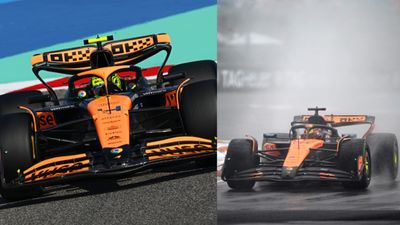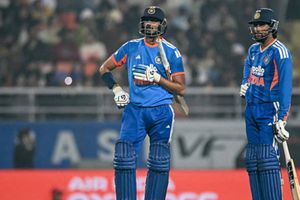McLaren’s Formula 1 dominance is rewriting history. After clinching their first Constructor’s Championship in 26 years in 2024, the papaya squad isn’t just leading the 2025 standings—they’re monopolizing them. Drivers Oscar Piastri (131) and Lando Norris (115) currently hold the top two spots in the World Driver’s Championship, leaving giants like Red Bull, Ferrari, and Mercedes scrambling for answers while the team is sitting convincingly at the top with 246 points, 105 points clear of Mercedes, which is in the second spot.
But how did a team once stuck in the midfield morph into an unstoppable force? The secret lies not in magic but in meticulous innovation.
Decoding McLaren’s meteoric rise from strugglers to champions
McLaren’s resurgence isn’t about flashy gimmicks—it’s rooted in mastering the mundane. While rivals speculated about “flexi wings” or “mini-DRS tricks,” the team’s true edge lies in rear tyre temperature control. By keeping rear tyres cooler under stress, Piastri and Norris maintain blistering pace without sacrificing rubber. Mercedes’ James Allison acknowledged the enigma:
“Their advantage is found most at rear-limited tracks… but it’s never one thing.”
Downforce dominance
Andrea Stella, McLaren’s team principal, credits their car’s “underlying downforce” as pivotal. In high-heat conditions like Bahrain—where track temperatures soared to 20°C above normal—McLaren’s MCL39 thrived, leaving rivals like Ferrari and Mercedes trailing by over a second. When temperatures dropped, gaps narrowed, but the car’s balanced aerodynamics ensured competitiveness. “The less grip you have, the more our downforce shines,” Stella noted.
Technical investments pay off
Beyond aerodynamics, McLaren’s targeted upgrades in tyre interaction have been transformative. Stella highlighted “technical investments in improving the car’s design around tyres”—a nod to specialized sensors and thermal management systems. The team’s retention of a controversial rear brake drum sensor port (sealed during races) hints at relentless data-driven optimization.
Weathering the storm
McLaren’s dominance isn’t universal. Cooler circuits like Japan exposed vulnerabilities, with Max Verstappen snatching victory. Yet, the team’s adaptability shines. In Bahrain, Piastri’s 0.8-second practice lead over Ferrari melted to 0.2 seconds in cooler qualifying—proof their car excels when grip is scarce but falters under optimal conditions.
Rivals’ theories vs. reality
Despite whispers of “tricks,” Stella downplays the hype. “Hearing from competitors, you’d think we’re in a different category… but gaps aren’t that vast,” he insisted. George Russell’s pressure on Piastri in Bahrain underscored this—McLaren’s edge lies in consistency, not invincibility.
The road ahead
Tyre warm-up challenges loom. Cars adept at cooling rubber often struggle to heat it quickly—a weakness McLaren hasn’t yet faced in 2025. Circuits like Monaco or Hungary, demanding rapid tyre prep, could test their formula.
McLaren’s revival isn’t about a single breakthrough. It’s a symphony of downforce, tyre mastery, and strategic innovation. For Piastri and Norris, this engineering harmony translates to podiums. For rivals, it’s a blueprint to decode—if they can.
ADVERTISEMENT










